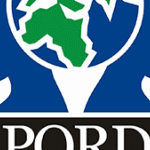These are the best universities in Canada with high acceptance rates for international students
International students aspire to study in Canada due to its excellent educational system and secure surroundings. In addition to the excellent educational opportunities provided by Canadian universities, the nation is renowned for its relaxed and adaptable educational environment, which enables international students to work well-paying jobs while still enrolled in classes.
It is crucial to remember that acceptance rates can differ significantly based on a variety of factors, such as the applicant’s qualifications, the competitiveness of the program, and the number of spots available. Nonetheless, it is well known that many universities in Canada have a high acceptance rate for international students.
Here are the best universities in Canada with a high acceptance rate:
Table of Contents
1. The University of Lethbridge
Acceptance rate: 93%
Founded in 1971, the University of Lethbridge is a public, comprehensive research university located in Lethbridge, Alberta. Over 8,900 students, including 8,200 undergraduates, 600 graduate students, and 150 doctorate students, can choose from a variety of bachelor’s, master’s, and doctorate programs offered by the institution. More than 550 international students from 90 countries attend universities in Lethbridge.
Furthermore, the school’s experiential learning platforms are most advantageous to students because they allow them to develop new abilities and qualities while gaining practical experience.
Note that anthropology, biological sciences, economics, chemistry and biochemistry, computer science and mathematics, philosophy, business, political science, and more are among the subjects taught at the university.
2. Lakehead University
Acceptance rate: 83%
Lakehead University was founded in 1965 and is a comprehensive university known for its cutting-edge research and innovative programs. Outstanding facilities like the Bio-Refining Research Institute and Paleo DNA Laboratory are located at Lakehead, along with eleven Canada Research Chairs.
With 7,500 students, Lakehead University has two campuses: one in Thunder Bay and one in Orillia.
Additionally, there are 57 undergraduate programs to select from, including courses in computer science, anthropology, business, economics, chemistry, and more.
Note that there are over thirty graduate programs available for master’s and doctoral degrees.
3. Thompson Rivers University
Acceptance rate: 82%
Founded in 1970 in British Columbia, Canada, Thompson Rivers University is a public research and education institution accredited by the NorthWest Commission on Colleges and Universities. Its two campuses are located in Kampoos and William Lake.
Each year, Thompson Rivers provides its students with over 140 programs, including co-ops, and awards more than $2.5 million in student scholarships. Every semester, it accepts about 3,500 international students from more than 100 nations.
Additionally, the university provides courses to applicants for distance learning and on-campus programs. In addition to extensive courses in administration, education, law, nursing, and other subjects, the online program offers courses in accounting, business, and criminology.
4. University of Northern British Columbia
Acceptance rate: 70–75%
At the University of Northern British Columbia, there are more than 350 students from abroad. The university had 4,253 students enrolled in 2020 and 2021, including 3,524 undergraduates, 736 graduates, and over 466 international students. Outstanding opportunities for undergraduate and graduate study in the fields of cultures, health, economies, sciences, and the environment are provided by the University of Northern British Columbia. Prince George’s is home to its largest campus.
In 2020–2021, over 1,800 students received scholarships and bursaries totaling CAD 3.25 million.
5. University of Prince Edward Island
Acceptance rate: 70%
A public, non-profit institution, the University of Prince Edward Island was founded in 1969. Various programs and degrees are available to students pursuing undergraduate, graduate, and doctoral degrees at UPEI.
UPEI provides students with access to top-tier faculty, researchers, and staff nationwide through its Canada Research Chairs, UNESCO Chairs, endowed and sponsored research chairs, and 3M National Teaching Faculty. Furthermore, postsecondary students in Asia, Africa, and Europe can choose from a variety of degrees offered by UPEI, which are selected based on their rigorous curriculum and high academic standards.
6. Brock University
Acceptance rate: 70%
The only university in Canada situated inside a UNESCO Biosphere Reserve is Brock University, which is based in St. Catherine, Ontario. It functions as a recreational, cultural, and educational hub for the neighborhood. Over $4 million has been allocated by Brock University to its award programs for the 2020–01 academic year.
The university offers more than 70 undergraduate and 50 graduate programs among the more than 130 programs. The co-op and service-learning options offer students maximum exposure to their chosen field of study, while the degree programs are designed to prepare them for their futures and careers.
7. Mount Allison University
Acceptance rate: 70%
Five million Canadian dollars in annual grants, scholarships, and bursaries are given to students at Mount Allison. The awards are given out according to extracurricular activities, academic performance, leadership qualities, professional experience, and community service.
The Tantramar marshes in Sackville, New Brunswick, Canada, are home to the 72-acre Mount Allison campus. Three faculties—the Faculty of Arts, Science, and Social Sciences—are served by its departments, which provide top-notch courses.
8. York University
Acceptance rate: 66%
York University is the third-largest university in Canada, with 94% of all graduates finding employment within two years of graduation. Ten thousand international students from 178 countries attend the Toronto-based university.
More than 300,000 alumni work there, along with 7,000 academic and administrative staff members.
York University works with more than 200 top universities worldwide through its 11 faculties and 25 research institutes. One well-known facet of its work is its support of innovative methods in research and education. York’s vibrant community encourages students and alumni to think creatively, challenge convention, achieve their objectives, and tackle the most difficult social problems facing society.
9. University of Guelph
Acceptance rate: 66%
With seven colleges—Ontario Veterinary College, Ontario Agricultural College, College of Biological Sciences, College of Arts, College of Physical and Engineering Sciences, and Gordon S. Lang School of Business and Economics—the University of Guelph is the fourth-largest comprehensive university in Ontario.
The University of Guelph offers 48 graduate programs, several diplomas, 94 undergraduate degrees, and cooperative education.
10. Acadia University
Acceptance rate: 65%
Founded in 1838, Acadia University is a highly esteemed and progressive university in Canada. The Canadian campus of Acadia University is stunning, offering views of the Annapolis Valley and the Bay of Fundy. The campus is surrounded by farmlands, forests, trails, and vineyards, all of which contribute to the friendly natural setting.
The university provides community service, intimate involvement, faculty collaborations, and a range of co-op placement and study abroad opportunities for students.
There are four faculties that combine 200-degree combinations for undergraduate and graduate courses: Applied Sciences, Arts, Professional Studies, and Theology.
11. Toronto School of Management
Acceptance Rate: 60%
Situated in Toronto, Canada, the Toronto School of Management is a first-rate business school. This school provides a range of learning options, including both in-person and online instruction. They also provide excellent co-op opportunities for students. Among the subjects that students can study are marketing, data analytics, and business management.
12. Wilfrid Laurier University
Estimated Acceptance Rate: 55%
Founded in 1911, Wilfrid Laurier University bears the name of Canada’s seventh prime minister. Seeking to advance knowledge for the benefit of society is a requirement of being a Laurier community member. With 19,500 students and more than 100 courses offered in what are referred to as “active learning classrooms,” it is the most sustainable campus in Ontario. Wilfrid Laurier University consistently ranks highest in Maclean’s University Rankings for student satisfaction because of how much its students love it.
13. Ryerson University
Estimated Acceptance Rate: 55%
Founded in 1948, Ryerson University is located in Toronto and is home to the nation’s largest undergraduate business school, the Ted Rogers School of Management. With more than 100 programs and over 45,000 students, RyeU is growing. Due to its central location in Toronto’s downtown, Ryerson has had little trouble forming alliances with surrounding companies and public areas.
Four major structures for the Toronto community were built as a result of these partnerships: the Daphne Cockwell Health Sciences Complex, the Ryerson Image Center, the Yonge Street Student Learning Center, and the Mattamy Athletic Center.
14. Université de Montréal
Estimated Acceptance Rate: 50%
Established in 1878 as Université Laval’s satellite campus, Université de Montréal is a French-language university. Situated on the northern slope of Mount Royal, UdeM accommodates more than 67,400 students and offers 600 top-notch academic programs. This Canadian university’s extremely high acceptance rate contributes to its popularity.
Reputable academics, top-notch students, and a stimulating environment for research consistently place the Université de Montréal in the top 90 universities worldwide. Among the notable alumni are Pierre Trudeau, the father of current Canadian prime minister Justin Trudeau, who was the country’s fifteenth prime minister at one point.
15. Concordia University
Estimated Acceptance Rate: 50%
One of the three universities in Quebec’s heritage mine that offers English as its primary language of instruction is Concordia University, a highly selective Canadian institution. It came into being when Sir George Williams University and Loyola College merged in 1974.
Concordia wants to make a lasting positive impact and develop innovative solutions that will help Montreal become globally recognized. It is currently ranked 22nd out of all Canadian universities, so it is making every effort to move up the national rankings.
16. Memorial University of Newfoundland
Estimated Acceptance Rate: 50%
Newfoundland’s Memorial University is among the best universities in Canada with high acceptance rates for international students. It is the only university in the province of Newfoundland and Labrador, and it is situated in St. John’s. In honor of those who fought in the First World War and gave their lives for their country, it was established in 1925.
With 18,000 students enrolled in its 100 degree programs, Memorial University, or MUN, as it is also known, is one of the biggest universities in Atlantic Canada. Additionally, it should be mentioned that Marine and Ocean Engineering, Memorial University of Newfoundland’s flagship course, is ranked 38th in the world.
Application Process
All intakes at Canadian universities follow the same application procedure. An outline of the meticulous application procedure for Canadian universities with high acceptance rates is provided below:
- Go to the university’s official website and pick the course you want to take.
- Examine the course syllabus and the prerequisites.
- Select the appropriate university’s application form by clicking on it.
- You must first register for an account with your email address or mobile number.
- An email or SMS containing your login credentials and verification will be sent to the number you registered with.
- Enter your personal information (name, gender, and birthdate) using the login credentials that have been provided.
- Enter your educational background and attach the necessary files.
- Make your course selection and application fee payments.
- Each university has a different application fee, which can be paid online via Internet banking or with a debit or credit card.
- After submitting your application, you can follow it up using your account.
- Certain universities will require selected students to attend a virtual interview.
Also Read: Universities in Canada With No Application Fees
Documents Required
The following is a broad list of the documents needed to be accepted into any Canadian university:
- Official academic transcripts
- A scanned copy of the passport
- CV/ Resume
- Letter of Recommendation
- English language proficiency test scores
- Statement of Purpose
- Two Reference Letters
- Note that if the degree certificate is not in English, postgraduate applicants must submit a translation of it.
Also Read:
How to Prepare For IELTS Exam – In 10 Practical Tips
What Are The Highest-Paying Stem Courses In Canada?
Cost of Studying in Canada
The average cost of studying in Canada for undergraduates and postgraduates is as follows:
Undergraduate courses
A bachelor’s degree in Canada can cost anywhere from CAD 12,000 to CAD 30,000 annually, with an average cost of CAD 30,000. In Canada, programs in engineering and medicine cost a little more than other undergraduate courses. These programs have an annual tuition fee of CAD 22,000 on average. Additionally, the cost of courses in management, business, and the humanities ranges from CAD 5,500 to CAD 6,500.
Postgraduate Courses
In Canada, a large number of students enroll in postgraduate or master’s degree programs like the MBBS in addition to undergraduate studies. International students will pay an average of CAD 18,000 in tuition fees annually. In particular, management (MBA) programs are very costly. Regular MBA programs have an annual tuition fee of about CAD 28,000, while executive MBA courses typically cost CAD 57,000.
Must Read: Cost of Studying in Canada
Conclusion
Even with excellent grades and test results, admission to many of Canada’s most selective programs and universities remains challenging, despite the country’s higher overall acceptance rates for universities. It is essential to familiarize yourself with the province’s application system before submitting an application to any Canadian university.
Find out if the SAT or ACT scores, along with any additional essays or information, are required by your desired school. In order to improve your chances of getting accepted, make sure your application is solid and comprehensive.
FAQs about the best universities in Canada with high acceptance rates for international students
Which Canadian university has the best acceptance rate?
The top Canadian universities with high acceptance rates include York University and Carleton University.
Which Canadian university is the hardest to get into?
One of the hardest Canadian universities to get into is the University of British Columbia.
Is it hard to gain admission to the University of Toronto?
At the University of Toronto, its acceptance rate is fairly competitive.
Do you want to get into one of these universities but are unsure of where to begin? You will receive assistance from EdXtra counselors and experts during the visa application process.







